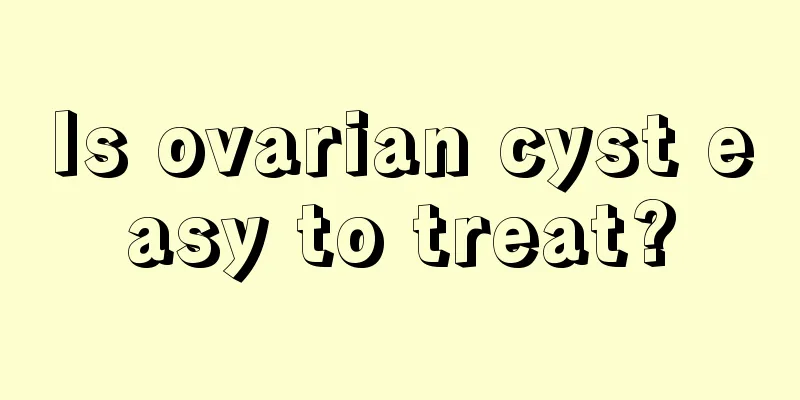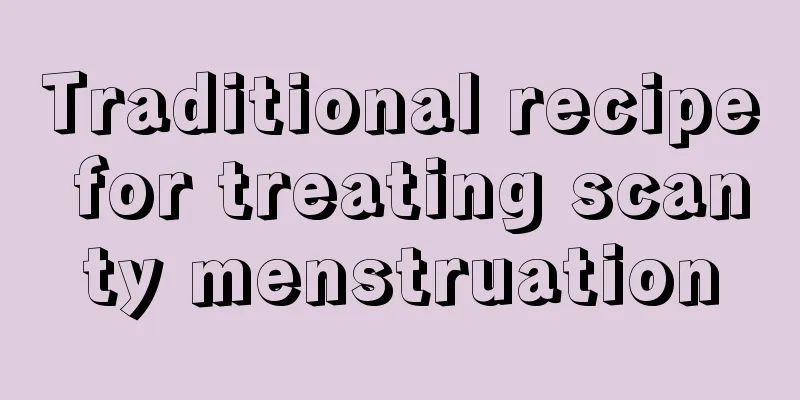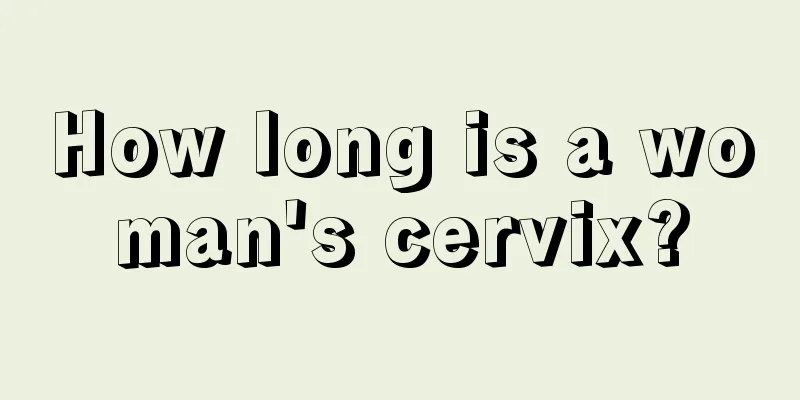Is ovarian cyst easy to treat?

|
Medical research has shown that women of every age are at risk of developing ovarian cysts. Once an ovarian cyst forms in a woman's body, it blocks the normal secretion of ovarian hormones. In addition, larger ovarian cysts can compress the uterine appendages, causing deformation of the uterine appendages. In a sense, ovarian cysts are also a gynecological disease. So is it easy for women to be cured after suffering from ovarian cysts? The treatment of ovarian cysts depends on factors such as the patient's age, whether the symptoms are malignant, the location, volume, size, growth rate of the cyst, deformation of the uterine appendages, whether the reproductive function is retained, and the patient's subjective wishes. 1. Traditional Chinese medicine formula for treating ovarian cysts: 12 grams of seaweed, 10 grams of white mustard seeds, 10 grams of Trillium, 20 grams of Coix seeds, 10 grams of peach kernels, 20 grams of Prunella Vulgaris, 6 grams of Arisaema, and 12 grams of red peony root. Function: Regulating Qi and relieving stagnation, promoting blood circulation and removing phlegm, softening hard masses and reducing swelling. Indications: Suitable for various cysts, especially ovarian cysts. It also has certain effects on uterine fibroids, teratomas, liver and kidney cysts. Usage: decoction in water, the medicine liquid is 600 ml, each serving is 300 ml, twice a day, 10 days is a course of treatment, and B-ultrasound is performed once every 1 to 2 courses of treatment. If there is efficacy, the medicine can be taken until the tumor disappears. If the tumor continues to grow after three courses of medication, it is considered ineffective and a CT scan can be done to further clarify the diagnosis and provide additional treatment. Note: If you suddenly experience severe lower abdominal pain, you should have an ultrasound examination to see if the tumor has twisted. If so, you should have surgical treatment in time. 2. Surgical treatment of benign ovarian cysts: 1) Ovarian cystectomy: For patients without menstrual disorders or pregnant women, if the tumor is more prominent on one side, salpingo-oophorectomy on the affected side can be performed. 2) Salpingo-oophorectomy: For patients over 45 years old, bilateral ovarian cysts are usually treated with unilateral or bilateral oophorectomy. Patients with physical inability to perform the procedure or severe inflammation often undergo total hysterectomy. 3) Adnexectomy and total hysterectomy: unilateral or bilateral ovarian cysts in perimenopausal or postmenopausal women. If the patient's general condition is not adequate for the procedure, bilateral adnexectomy and total hysterectomy are appropriate, but this will seriously affect endocrine disorders. 3. Surgical treatment of malignant ovarian cysts: 1) For patients in the advanced stage, every effort should be made to remove the primary cyst and any visible pelvic and abdominal metastases. 2) For ovarian malignant tumors with ascites, regardless of whether they are completely removed or not, it is advisable to place a catheter in the abdominal cavity to facilitate postoperative intraperitoneal injection of anticancer drugs or radioactive colloidal gold or colloidal phosphorus. The treatment of ovarian cysts is basically divided into conservative treatment and surgical extraction treatment. It is best not to undergo surgery to treat ovarian cysts unless it is absolutely necessary. Once the ovaries, fallopian tubes and uterus are removed, it will have varying degrees of impact on women's physical, physiological and mental health. Do not stimulate or extract ovarian cysts casually. Many patients report that the more they extract, the faster the cyst grows. The scientific approach should be to choose the right medicine for active treatment and combine it with close follow-up and reexamination, pay attention to changes in the nature of ovarian cysts, and then take appropriate countermeasures. |
<<: The harm of girls shaving their pubic hair
>>: Treating female infertility
Recommend
Vaginal tightening exercises and training methods after normal delivery
In life, many women choose cesarean section to pr...
What to do about inflammatory breast cancer
There are many types of breast cancer, inflammato...
What are the benefits of eating seaweed? What is the best thing to eat with seaweed?
The polysaccharides contained in laver can signif...
What foods are good for dysmenorrhea
There are many common types of food in life. You ...
40-year-old woman's hands feel numb when sleeping
The arms are controlled by the median nerve, ulna...
How to stop being irritable during menopause
This is the 3872nd article of Da Yi Xiao Hu Menop...
Postpartum abdominal muscle separation
Many women experience abdominal stretching during...
How to save chili sauce from being too spicy? How to store chili sauce without spoiling
Many people like to eat chili sauce. Some people ...
Is it suitable to have massage during menstruation?
Proper massage during menstruation is also benefi...
When is the best month to plant ryegrass? How to plant ryegrass to achieve a high survival rate
Ryegrass is a common plant in our lives. It is lo...
People are on the ring at the same time
There are many things you need to pay attention t...
Is Elegant Family Mao Wanjun a transgender or a transvestite? What is the secret of the second brother of Elegant Family?
The screenwriter of the drama "Elegant Home&...
Have you learned about these blood knowledge?
The human body is different at different stages s...
How to avoid getting drunk easily? What to eat before drinking to avoid getting drunk easily when there is no hangover medicine
What to eat before drinking to prevent getting dr...
What are the reasons why women do not have their periods?
Menstruation is something that women need to expe...









